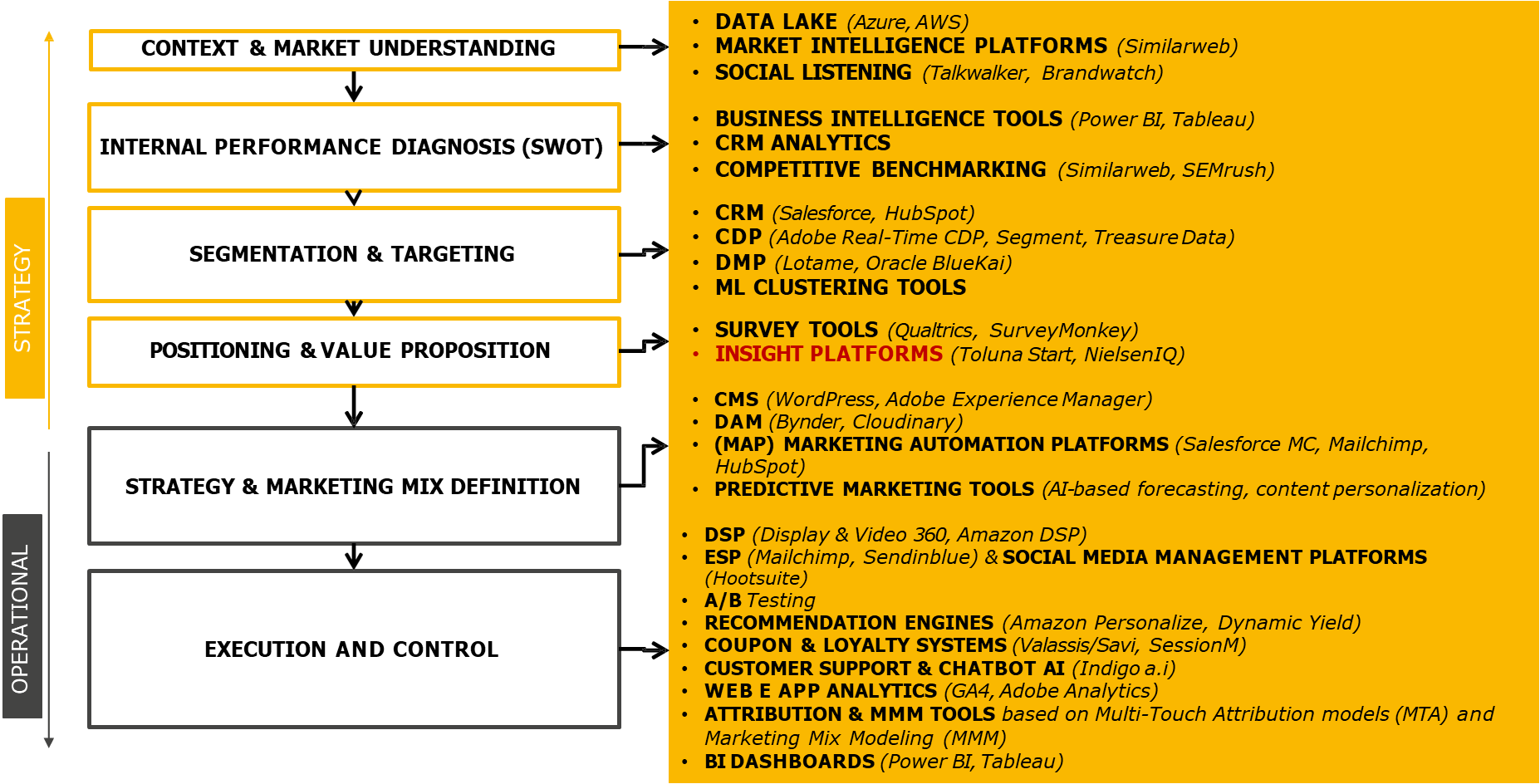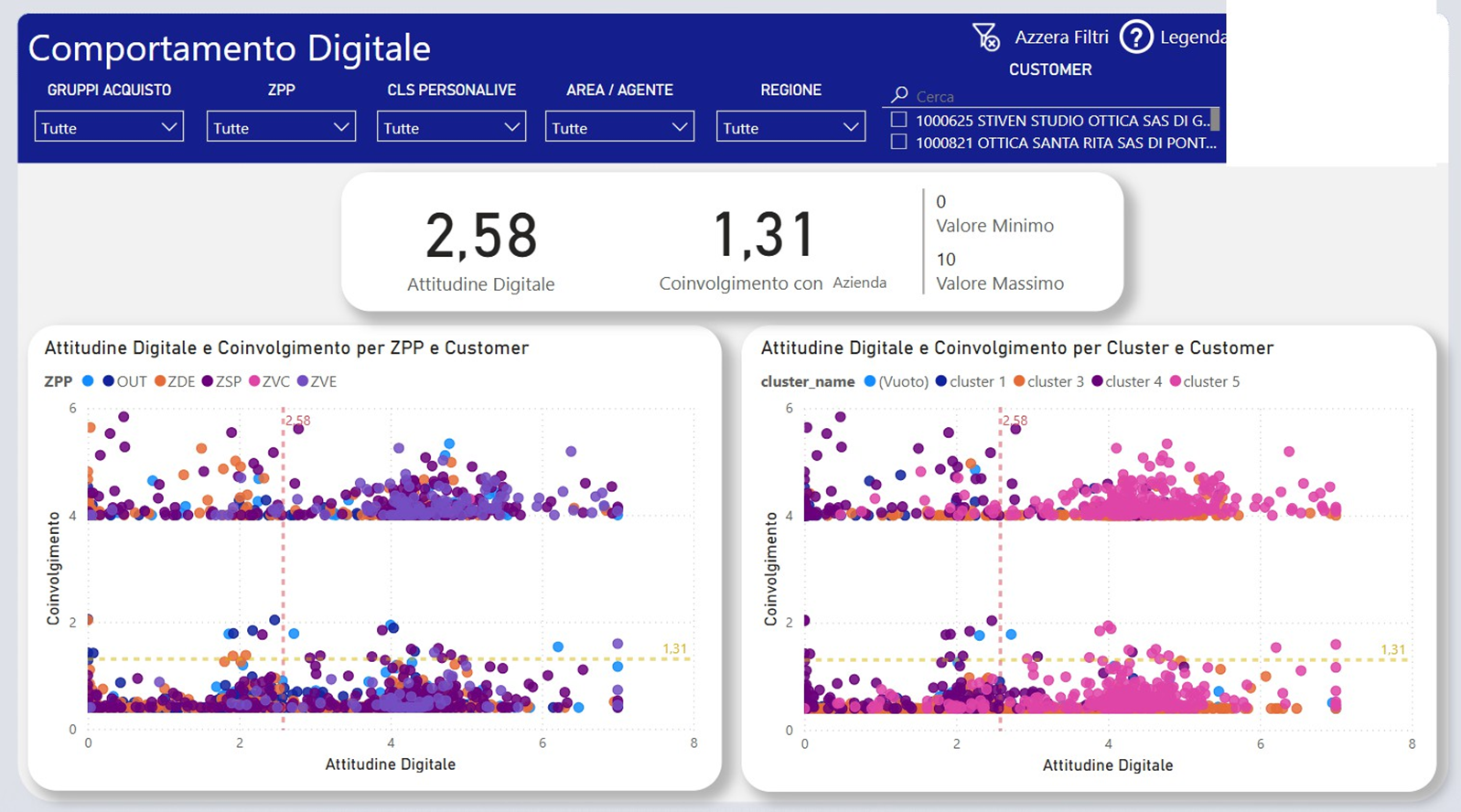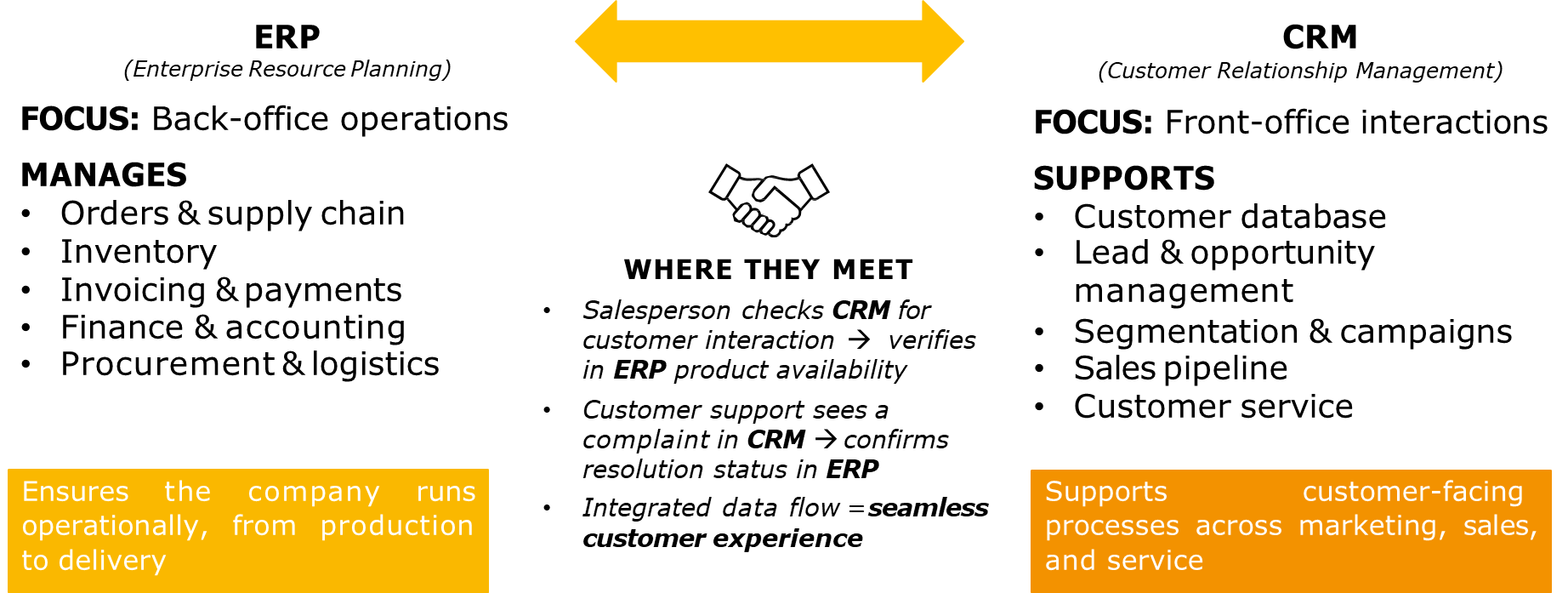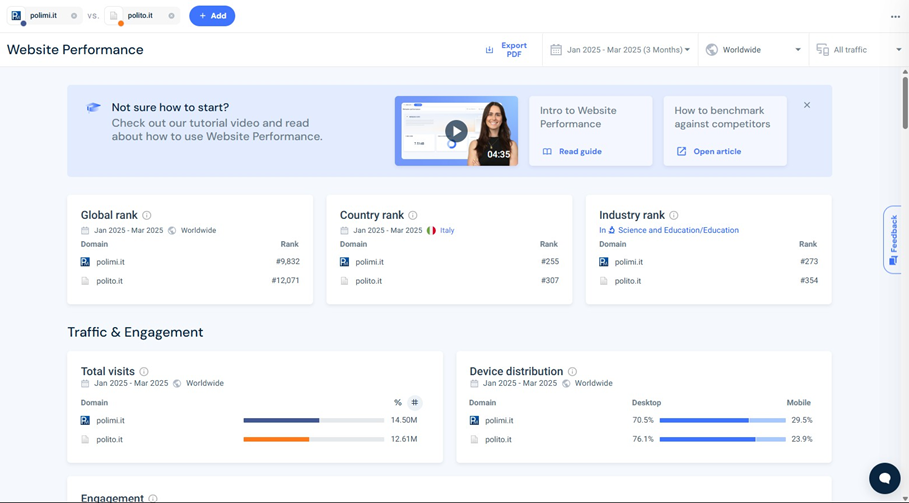In today’s digital era, marketing is no longer a domain driven solely by creativity and intuition; instead, it has become deeply intertwined with technology and data-driven processes.
An enormous volume of data is continuously being generated across all digital touchpoints—ranging from customer interactions and transactions to social media activities and online behavior. This data must be effectively stored, processed, and analyzed in order to derive actionable insights that can drive strategic decisions.
The end goal is to deliver a seamless and personalized customer experience, one that aligns with user expectations and business goals.
To achieve this, organizations must rely on a robust MarTech (Marketing Technology) stack—a complex ecosystem of tools and platforms designed to support the entire marketing lifecycle. These technologies not only enable better data management but also facilitate integration across teams, improve targeting precision, enhance customer engagement, and streamline operational efficiency.
Mapping Technologies Along the Marketing Process
The marketing process can be broadly divided into two interconnected components: the strategic phase and the operational phase.
Definition
- The strategic phase involves understanding the context in which the business operates, analyzing the market landscape, and positioning the company and its offerings accordingly. This includes identifying market opportunities, analyzing competitors, defining customer segments, and setting marketing objectives.
- The operational phase focuses on the execution of marketing strategies through campaign planning, content delivery, customer engagement, and performance measurement.
Technology plays a critical role in both stages. At the strategic level, it helps gather and interpret data to shape high-level decisions. At the operational level, it enables automation, real-time interaction, and continuous monitoring of marketing activities.

Modern marketing is data-intensive. Every stage—from customer segmentation and behavior analysis to campaign execution and performance tracking—is supported by a stream of data that needs to be systematically processed. This makes marketing processes increasingly dependent on structured workflows that integrate technology at their core. Cloud infrastructure, for instance, is a foundational element in today’s marketing environment, ensuring that data is accessible, scalable, and shareable across different organizational functions.
Technology acts as a strategic enabler throughout the marketing process.
Example
For example, during the segmentation phase, machine learning algorithms or traditional statistical models can be employed to identify meaningful customer clusters. These insights help personalize communication by tailoring content to specific audience groups. Content management platforms further enhance this process by optimizing the creation, delivery, and performance of marketing messages across multiple channels.
Additionally, measurement and feedback mechanisms are vital at the end of the marketing cycle. After campaigns are deployed, data analytics tools assess effectiveness by analyzing key performance indicators (KPIs). These tools help marketers determine what worked, what didn’t, and how to refine future strategies. Automation platforms also support customer journey orchestration, where predefined workflows and trigger-based events guide customers through tailored experiences.
Technology Stack and Marketing Tools
A comprehensive MarTech stack includes a combination of core technologies, digital platforms, and data sources. Among the foundational technologies is the data lakes—a centralized repository that stores vast quantities of raw data in its native format. Unlike traditional data warehouses, data lakes are particularly suited for storing unstructured data such as images, videos, social media content, and logs. This flexibility makes them essential for capturing the full scope of customer interactions.
However, the data stored in a data lake does not inherently provide value unless it is processed and interpreted. To transform data into actionable insights, marketers rely on analytical tools and business intelligence platforms. These platforms apply algorithms, visualizations, and reporting features that help extract patterns and trends relevant to marketing objectives.
Marketing Intelligence Platforms and Social Listening
Marketing Intelligence Platforms represent a critical element in the broader MarTech ecosystem. These platforms encompass a set of digital tools and data sources that enable companies to monitor the market environment, evaluate their positioning relative to competitors, and assess internal performance using structured and unstructured data. The goal is to support decision-making by transforming raw data into actionable insights across all phases of the marketing process—from strategic planning to performance analysis.
Example
A prime example of a Marketing Intelligence tool is SimilarWeb, a platform that allows businesses to analyze web traffic data, compare their online presence with that of their competitors, and assess their relative performance. Through metrics such as traffic volume, source of visits, bounce rates, and audience engagement, marketers can benchmark their digital effectiveness against industry standards or specific rival firms. This type of platform is especially useful when companies seek to understand their digital market share or to identify trends in customer acquisition channels.
In addition to direct technological tools, Marketing Intelligence also draws upon external data sources that are not necessarily platforms but still play a strategic role. Websites such as Statista, for example, provide macro-level data on economic trends, consumer behavior, market forecasts, and industry benchmarks. Though not interactive technologies per se, these sources offer vital contextual information that can shape a company’s strategic decisions and marketing strategies. They help marketers understand broad environmental variables that affect business performance, such as inflation trends, demographic shifts, or emerging market segments.
Another key aspect of marketing intelligence is social listening. Social listening tools analyze public conversations on digital platforms—especially social media, blogs, online forums, news articles, and review sites—to evaluate how a brand, product, or campaign is being perceived. These tools extract keywords, themes, and sentiment indicators from user-generated content, enabling businesses to capture consumer opinions, track emerging concerns, and understand emotional responses associated with their brand.
For instance, a company that believes it is perceived as sustainable might discover through social listening that it is actually criticized for superficial "greenwashing."
In this way, social listening becomes essential for validating branding efforts and identifying gaps between intended messaging and actual public perception.
Business Intelligence (BI) Tools
Internally, companies rely on Business Intelligence (BI) tools to monitor and analyze operational performance. These platforms, such as Power BI and Tableau, are designed to handle structured data—typically coming from centralized databases or data lakes—and transform it into interactive dashboards and visual reports. The power of these tools lies not only in data integration capabilities but also in the effectiveness of data visualization, which allows decision-makers to comprehend complex datasets at a glance.

BI tools play a dual role:
- they act as aggregators by connecting to multiple data sources and merging the data into coherent formats.
- they act as decision-support systems by enabling users to generate visualizations that reveal patterns, anomalies, and trends.
However, it is important to emphasize that the value of BI tools depends on the quality of visualization and the relevance of the selected data. A common misconception is that merely having access to data is sufficient; in reality, if data is poorly presented or lacks contextual clarity, it becomes ineffective. A good BI dashboard should highlight only the most relevant metrics and display them in a way that aligns with business goals, often involving a curated subset of data rather than the entire dataset.
CRM Analytics
Another vital pillar in the marketing intelligence infrastructure is Customer Relationship Management (CRM) analytics. The CRM system is typically the core repository of customer-related data within a company, serving as a centralized hub for sales, marketing, and customer service interactions. It stores essential information such as customer purchase history, geographic location, demographics (e.g., age, gender), behavioral patterns, interests, and communication preferences.
CRM analytics refers to the process of analyzing this customer data to uncover insights into sales performance, customer retention, cross-selling opportunities, and marketing campaign effectiveness.
Example
For example, a CRM system can help determine which customer segments are most profitable, when and where sales conversions are most likely to happen, or how well a promotional campaign is performing across different customer groups. This analysis is instrumental in refining targeting strategies, customizing offerings, and enhancing customer satisfaction.
Moreover, when a CRM is integrated with business intelligence platforms, it enables companies to generate advanced analytics that combine operational data with customer data, creating a more holistic view of organizational performance. This allows businesses not only to react to customer behavior but to anticipate it, transitioning from reactive marketing to proactive customer engagement strategies.
Competitive Benchmarking
Definition
Competitive benchmarking refers to the systematic process of analyzing competitors to understand their market positioning and performance. One of the main objectives is to identify the keywords that rival companies rank for in search engines, offering insight into their search engine optimization (SEO) strategy and content focus.
Tools such as SimilarWeb and SEMrush are commonly employed in this phase. While SimilarWeb provides a broad overview of web traffic, SEMrush is often considered more robust and precise when it comes to keyword tracking and competitor analysis. These tools allow companies to compare their digital performance metrics with those of competitors, making it easier to identify strategic gaps and opportunities for growth.
CRM, CDP, DMP and ML Clustering
The segmentation and targeting phase marks the transition into the core of any strategic marketing plan. At this stage, the focus is on organizing and interpreting customer data. A Customer Relationship Management (CRM) system plays a central role in this process. Widely used platforms include Salesforce, favored by large enterprises for its extensive capabilities, and HubSpot, which is more popular among small to medium-sized enterprises (SMEs) due to its affordability, user-friendly interface, and full cloud-based operation.
Another key system is the Customer Data Platform (CDP), which is often confused with CRMs. While both collect customer information, a CDP focuses more on integrating data from multiple sources into a unified customer profile, enabling advanced segmentation and personalized marketing. In contrast, CRMs are more concerned with tracking individual customer interactions across the sales funnel.
In addition to CRM and CDP systems, there are Data Management Platforms (DMPs), which serve as temporary data repositories typically used for programmatic advertising and audience analysis. Unlike CRM and CDP systems, the data in DMPs is usually anonymized and short-lived—often deleted after 30 days—making them suitable for campaigns requiring large-scale audience targeting rather than persistent customer relationship tracking.
Once this data infrastructure is in place, businesses can leverage Machine Learning (ML) techniques, such as clustering and predictive modeling, to extract actionable insights. Many MarTech platforms come with built-in ML capabilities, although these features often operate as “black boxes.” As a result, some organizations opt to develop custom algorithms tailored to their specific business needs, ensuring transparency and control over data processing and analysis.
Survey Tools
Establishing a strong market position and articulating a compelling value proposition requires a deep understanding of consumer perception. One of the most effective methods for obtaining this information is through quantitative market research, particularly surveys. Tools such as SurveyMonkey are widely used to collect feedback on consumer preferences, expectations, and brand awareness.
For more advanced research, companies often turn to market research firms that manage consumer panels—groups of pre-screened individuals who participate in studies. These platforms facilitate targeted questioning, helping businesses validate product ideas or gauge market sentiment.
Strategy Development
At this point, companies begin to design their marketing strategy, which includes defining the marketing mix (product, price, place, and promotion). A variety of MarTech tools assist in this phase. Content Management Systems (CMS) such as WordPress or Adobe Experience Manager allow marketing teams to manage and publish content on digital platforms. Digital Asset Management (DAM) tools provide centralized repositories to organize and distribute content across multiple channels efficiently.
Another vital set of tools includes Marketing Automation Platforms like Salesforce Marketing Cloud, Mailchimp, and HubSpot. These platforms automate campaign orchestration, managing emails, SMS, push notifications, and more. Often, these systems are equipped with predictive analytics features that help determine the optimal time to send communications or the type of content most likely to resonate with specific customer segments.
Execution and Campaign Control
This phase encompasses the actual deployment of marketing initiatives. Here, tools such as Supply-Side Platforms (SSPs) enable programmatic advertising by automating the purchase and placement of ads in real-time. Email Service Providers (ESPs) like Sendinblue or Mailchimp handle bulk email and SMS communications.
It’s important to note that many tools are multi-functional; for instance, a platform might serve both as an ESP and a marketing automation suite.
The overlap between functionalities is increasingly common, reflecting an industry trend toward converged platforms that handle multiple aspects of the marketing lifecycle.
To ensure campaign success, social media management tools help teams schedule and monitor posts across platforms. For e-commerce companies, recommendation engines provide personalized product suggestions based on user behavior. While large organizations may choose to develop proprietary recommendation systems, many smaller businesses rely on third-party solutions that are easier to implement and maintain.
Loyalty and couponing systems are another category of MarTech tools, typically used in retail environments such as supermarkets. These platforms track consumer rewards and promotional offers, often managed externally rather than developed in-house.
Analytics, Attribution, and Optimization
Analyzing campaign performance requires comprehensive measurement tools. Web analytics platforms like Google Analytics and Adobe Analytics capture user behavior across digital assets such as websites and mobile apps. More advanced tools handle attribution modeling—a method used to determine the impact of different marketing touchpoints on a customer’s decision to convert. Multi-Touch Attribution (MTA) models attempt to distribute credit across all digital interactions a user has with a brand, rather than assigning all credit to the final click. However, these models heavily rely on cookies and are increasingly challenged by privacy regulations and the decline of third-party cookies.
To overcome these limitations, businesses are turning to Marketing Mix Modeling (MMM), which works across both digital and traditional channels. MMM can estimate the incremental sales generated by various marketing activities and allocate revenue contributions across channels like TV, digital ads, or in-store promotions. Unlike MTA, MMM does not rely on individual user tracking, making it more robust in a privacy-conscious landscape.
Business Intelligence (BI) dashboards aggregate and visualize data from multiple sources, enabling both strategic and operational decision-making. These dashboards can be used at the top of the funnel to monitor brand awareness, as well as at the bottom of the funnel to track campaign conversions and ROI.
Customer Support and Conversational AI
Though not always classified directly under marketing, customer support systems play a pivotal role in sustaining the customer experience. Technologies such as AI-powered chatbots and natural language processing tools assist support agents by answering frequently asked questions or automating first-line responses. These systems rely increasingly on Large Language Models (LLMs), allowing for more context-aware, coherent, and human-like interactions with customers.
In-House vs. Outsourced Solutions
In real-world scenarios, companies rarely manage all their technological platforms entirely in-house. The complexity of digital ecosystems, the need for specialization, and the strategic importance of certain data and tools lead organizations to adopt mixed management strategies. These strategies often involve a combination of internal resources, third-party providers, and hybrid models depending on the nature and strategic importance of the specific platform.
| TECHNOLOGY | IN-HOUSE? | EXTERNAL PARTNER |
|---|---|---|
| CUSTOMER INSIGHT / RESEARCH PLATFORMS | Hybrid | Research agencies / panels (e.g. Nielsen, Ipsos) |
| CRM / CDP | Yes | Media Agency |
| CMS / DAM | Yes | Creative agency |
| MARKETING AUTOMATION | Hybrid | Martech consultants |
| DSP / MEDIA BUYING | No | Media agency |
| COUPON & LOYALTY | No | Loyalty providers |
| WEB ANALYTICS & ATTRIBUTION | Hybrid: analytics in-house, attribution models outsourced | Specialized partners |
| CHATBOTS & CUSTOMER SUPPORT | Hybrid: traditional customer support in-house, AI chatbot outsourced | Specialized partners |
| SOCIAL MEDIA MANAGEMENT | It depends | Creative / social media agency or internal team |
| BUSINESS INTELLIGENCE (BI) | Yes | - |
A company may decide to fully own and manage some technologies, especially when they represent a key source of competitive advantage. In contrast, other platforms might be outsourced to specialized external providers, either due to their complexity or because they are not considered core to the business. In many cases, hybrid arrangements are established, wherein part of the platform is operated internally and part externally, depending on operational needs, internal competencies, and cost-efficiency considerations.
ERP and CRM
Enterprise Resource Planning (ERP) and Customer Relationship Management (CRM) systems form the operational and customer-facing backbone of modern organizations. While they serve distinct purposes within a company’s digital infrastructure, their integration is critical for seamless business performance.
Definition
ERP systems are comprehensive suites of software applications designed to manage and automate the core operational processes of a business. These include, but are not limited to, supply chain management, order processing, inventory tracking, procurement, logistics, invoicing, accounting, and financial reporting.
Essentially, an ERP provides a unified and real-time view of all backend activities, facilitating informed decision-making and operational efficiency. Without an ERP, a business would struggle to coordinate its resources effectively, from production planning to delivery execution.
Definition
CRM systems are primarily focused on managing and optimizing all interactions between a company and its current or potential customers. They serve the front-office domain, encompassing marketing, sales, and customer service functions.
A CRM enables organizations to store detailed records of customer interactions, manage sales pipelines, track leads, and personalize communication. Information such as previous purchases, service inquiries, and engagement history is centralized within the CRM, empowering teams to deliver timely and relevant customer experiences. For instance, when a customer service agent is contacted by a client, the CRM allows them to quickly retrieve past issues, feedback, or complaints, which is essential for offering contextual and satisfactory support.

From a marketing perspective, a CRM system acts as a central hub for all customer-related data. It supports core functions such as segmentation, targeting, lead management, campaign planning, and performance measurement.
Lead management, in particular, is the process of tracking and nurturing potential customers—referred to as “leads”—as they move through the sales funnel. The CRM allows companies to assign scores to leads based on their behavior and engagement (a process known as lead scoring). As leads become more “qualified”, they become more likely to convert into actual customers. This process is often described as “warming up” the leads.
CRM systems also store historical data that supports strategic decisions in marketing. For example, analyzing past campaign performance helps refine future segmentation strategies. The CRM is thus not only a transactional tool but also a strategic repository of valuable customer insights.
From CRM to CDP
Although CRM systems are essential for managing individual customer relationships, their scope is often limited to sales and marketing functions. They are not typically designed to incorporate data from other critical areas such as product usage, customer service logs, finance, or supply chain operations. This limitation hinders the ability to achieve customer-centricity, which requires an integrated and holistic view of customer behavior across all business units.
This is where Customer Data Platforms (CDPs) come into play.
Definition
A CDP is a software system designed to unify and normalize customer data from multiple internal and external sources, generating a persistent, consolidated customer profile. They aggregate structured and unstructured data from websites, mobile apps, ERPs, help desks, and transactional systems, enabling a broader and more complete understanding of customer journeys.
CDPs are especially valuable in advanced marketing applications such as personalization, AI-driven targeting, and predictive analytics. Since CDPs consolidate data across the organization, they are foundational to data maturity and enable cross-functional insights. In contrast, CRMs alone cannot support these levels of integration and are often insufficient for deploying machine learning models or performing advanced customer segmentation.
CDP and DMP
Another data platform that often causes confusion is the Data Management Platform (DMP). While both CDPs and DMPs manage customer data, their functions and data types differ significantly. A CDP stores first-party data—that is, data directly collected by the company through its own interactions with customers. This includes email addresses, purchase history, customer IDs, and behavioral data. First-party data is persistent and can be continually enriched over time, making it highly valuable for long-term strategy and personalization.
In contrast, a DMP primarily handles third-party data, which is often collected anonymously through cookies and other tracking technologies. This data is used to build generalized audience segments for advertising purposes, especially in programmatic advertising and real-time bidding (RTB) environments. Unlike CDPs, DMP data is typically anonymized, less persistent, and shorter in lifespan, and it is frequently managed by external media agencies rather than internal business teams.
| CDP | DMP | |
|---|---|---|
| Type of Data | First party, identifiable and pertinent data (email, customer id…) | Anonymous, cookie-based data, often third-party (non-logged-in users) |
| Main Objective | Build a unified and long term customer profile for omnichannel personalization and activation | Build an anonymous audience segment for advertising and programmatic targeting |
| Data Lifespan | Long-term | Short-term |
| Main Users | Marketing teams, CRM managers, customer experience teams, IT | Media teams, performance marketing, advertising agencies |
